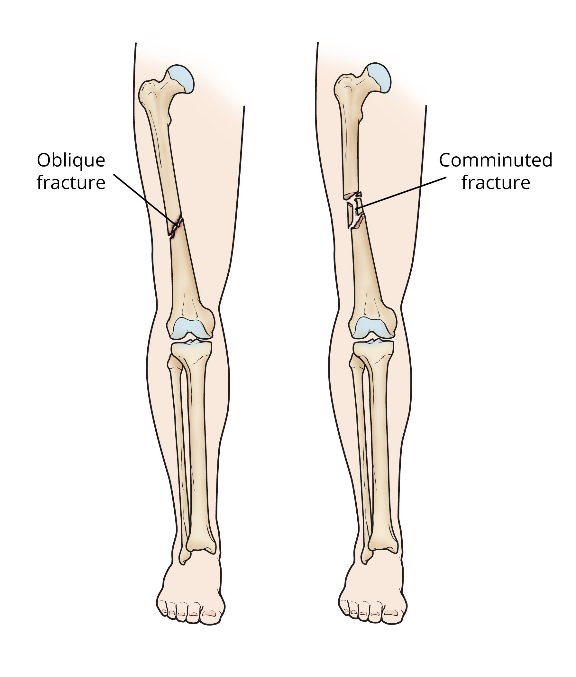A nurse is developing a plan of care to prevent skin breakdown for a client with a spinal cord injury and paralysis. Which of the following nursing actions are appropriate? (Select all that apply.)
Massage over erythematous bony prominences.
Minimize skin exposure to moisture.
Use pillows to keep heels off the bed surface.
Implement a turning schedule every 4 hours.
Keep the client's skin dry with powder.
Correct Answer : B,C
The correct answer is b. Minimize skin exposure to moisture and c. Use pillows to keep heels off the bed surface.
Choice A reason:
a. Massage over erythematous bony prominences: This is incorrect because massaging erythematous (reddened) areas can cause further tissue damage and exacerbate skin breakdown.
Choice B reason:
b. Minimize skin exposure to moisture: This is correct. Moisture can lead to skin maceration, increasing the risk of skin breakdown. Keeping the skin dry helps maintain its integrity.
Choice C reason:
c. Use pillows to keep heels off the bed surface: This is correct. Elevating the heels reduces pressure on them, preventing pressure ulcers.
Choice D reason:
d. Implement a turning schedule every 4 hours: This is incorrect. To prevent pressure injuries, turning should be done every 2 hours, not every 4 hours.
Choice E reason:
e. Keep the client’s skin dry with powder: This is incorrect. Powder can cause skin irritation and breakdown.
Nursing Test Bank
Naxlex Comprehensive Predictor Exams
Related Questions
Correct Answer is D
Explanation
Choice A reason:
Measuring the circumference of the thigh can be part of the assessment for swelling or edema, which may indicate compartment syndrome or other issues. However, it is not a direct measure of neurovascular status, which focuses on blood flow and nerve function.
Choice B reason:
Palpating the femoral pulse is important for assessing blood flow to the leg, but for a midshaft femur fracture, more distal pulses such as the popliteal, dorsalis pedis, or posterior tibial pulses would be more indicative of the neurovascular status of the affected limb.
Choice C reason:
Monitoring the client's calf for edema is a useful technique for identifying signs of swelling that could suggest complications like deep vein thrombosis or compartment syndrome. However, it does not provide a complete picture of neurovascular integrity, which also includes sensory and motor function assessment.
Choice D reason:
Instructing the client to wiggle his toes is a direct assessment of motor function, which is a key component of neurovascular status. This action, along with checking for sensation and capillary refill, helps to determine if there is any impairment in nerve function or blood supply to the affected area.

Correct Answer is A
Explanation
Choice a) Raloxifene:
Raloxifene is part of a class of drugs known as selective estrogen-receptor modulators (SERMs). It works by imitating the beneficial effects of the hormone estrogen on your bones, helping to prevent bone loss and improve density. Therefore, it is used in the prevention and treatment of osteoporosis.
Choice b) Calcitonin:
Calcitonin is a hormone that a person’s thyroid gland produces. It helps regulate the amount of calcium in the body. For the treatment of postmenopausal osteoporosis, scientists typically extract calcitonin from salmon. This is because salmon calcitonin has a much higher potency than human calcitonin. Osteoclasts are cells in the body that degrade bone. Calcitonin can inhibit osteoclasts. This helps slow the loss of bone density and increases bone mass, hindering the progression of osteoporosis.
Choice c) Allopurinol:
Allopurinol is primarily used to treat gout and certain types of kidney stones. It is not typically used in the prevention or treatment of osteoporosis.
Choice d) Levothyroxine:
Levothyroxine is used to treat hypothyroidism (underactive thyroid). It is not typically used in the prevention or treatment of osteoporosis. However, if you are prescribed levothyroxine you should have regular blood tests, at least once a year, to ensure your thyroid hormone levels are not too high. Continuous high thyroid hormone levels may lead to developing or worsening of low bone density and osteoporosis.
Whether you are a student looking to ace your exams or a practicing nurse seeking to enhance your expertise , our nursing education contents will empower you with the confidence and competence to make a difference in the lives of patients and become a respected leader in the healthcare field.
Visit Naxlex, invest in your future and unlock endless possibilities with our unparalleled nursing education contents today
Report Wrong Answer on the Current Question
Do you disagree with the answer? If yes, what is your expected answer? Explain.
Kindly be descriptive with the issue you are facing.
